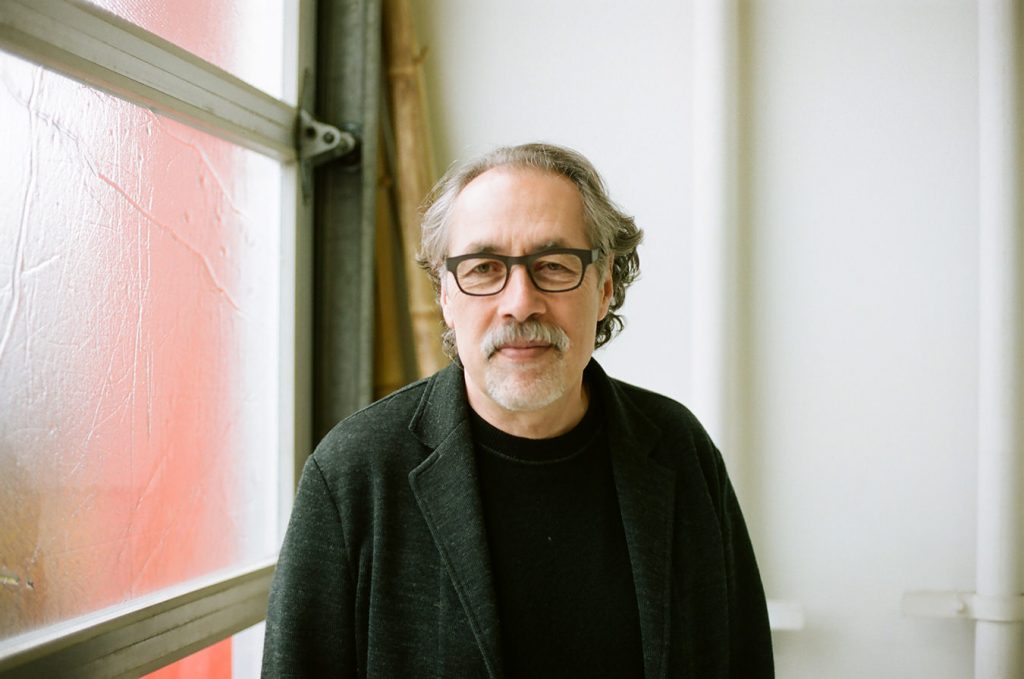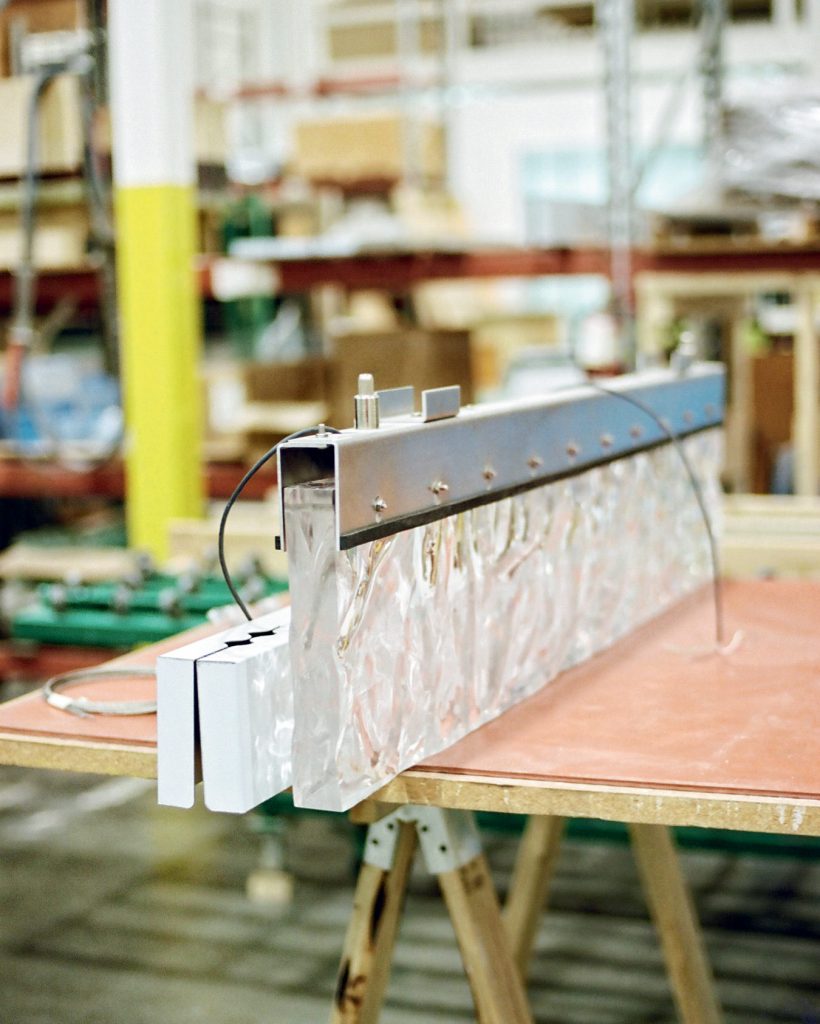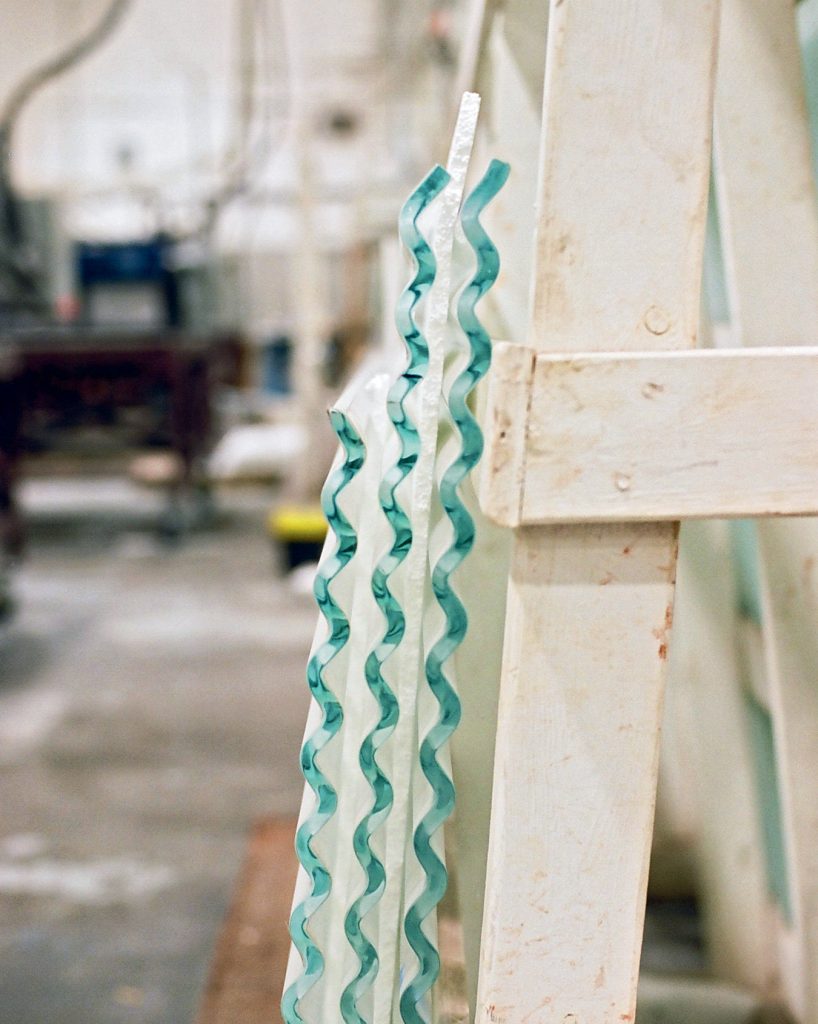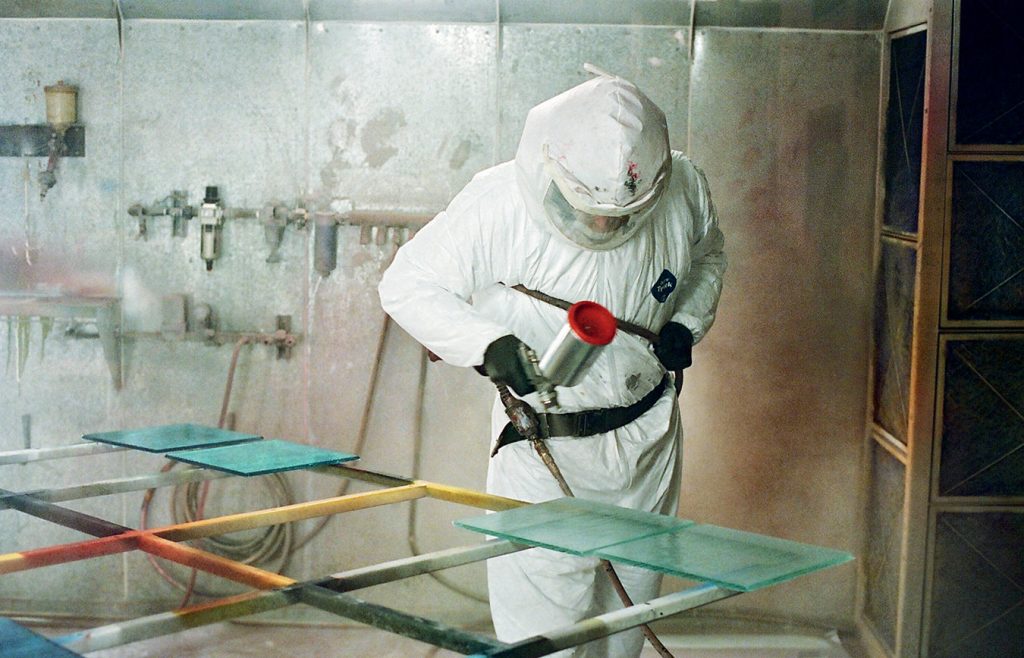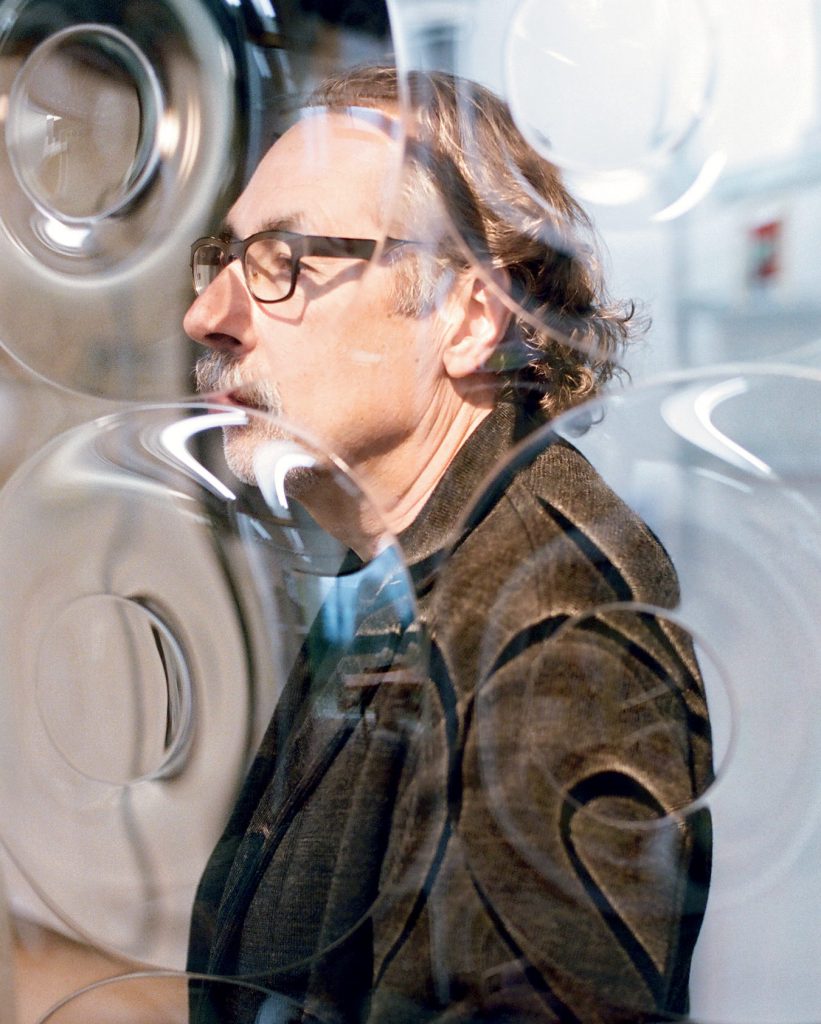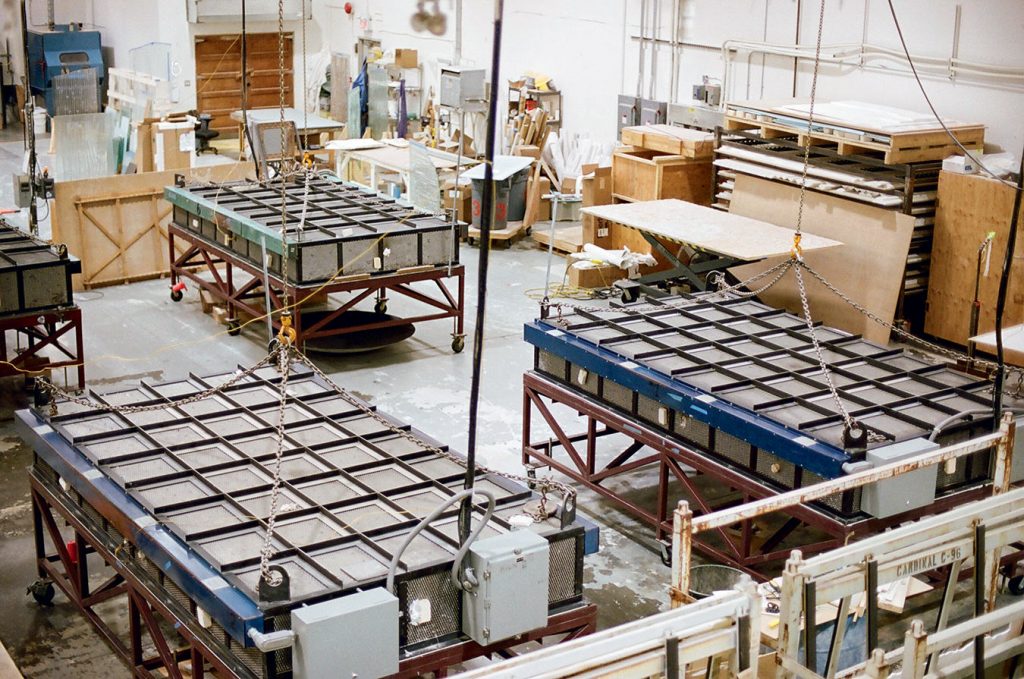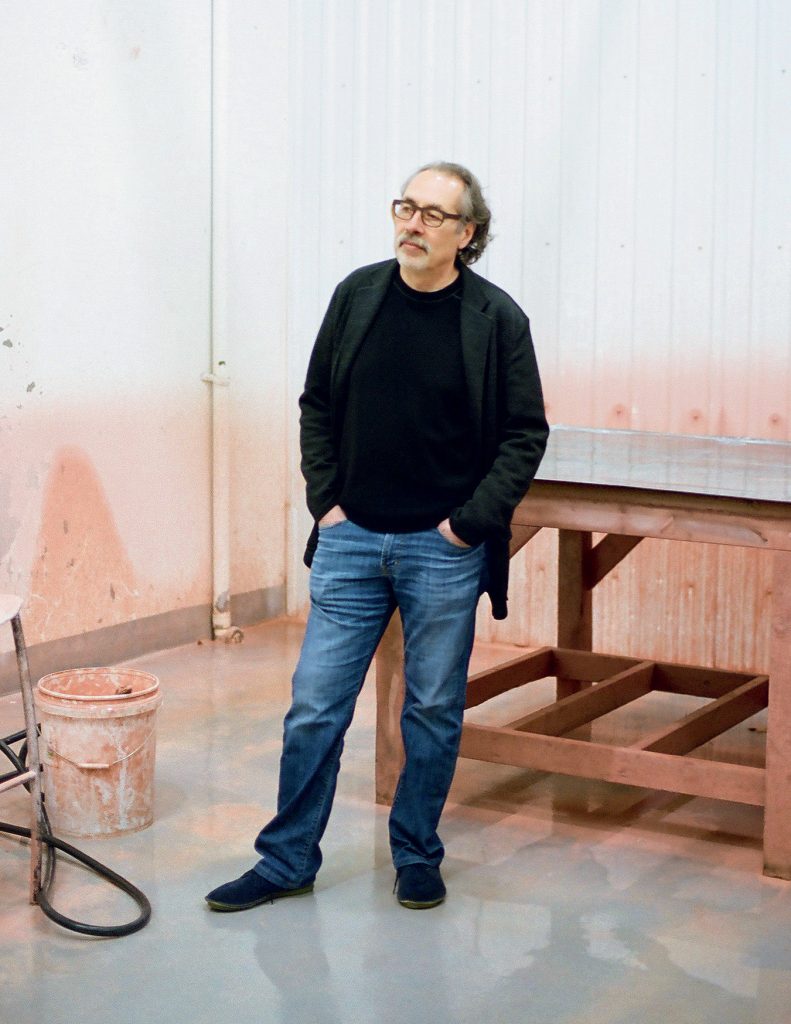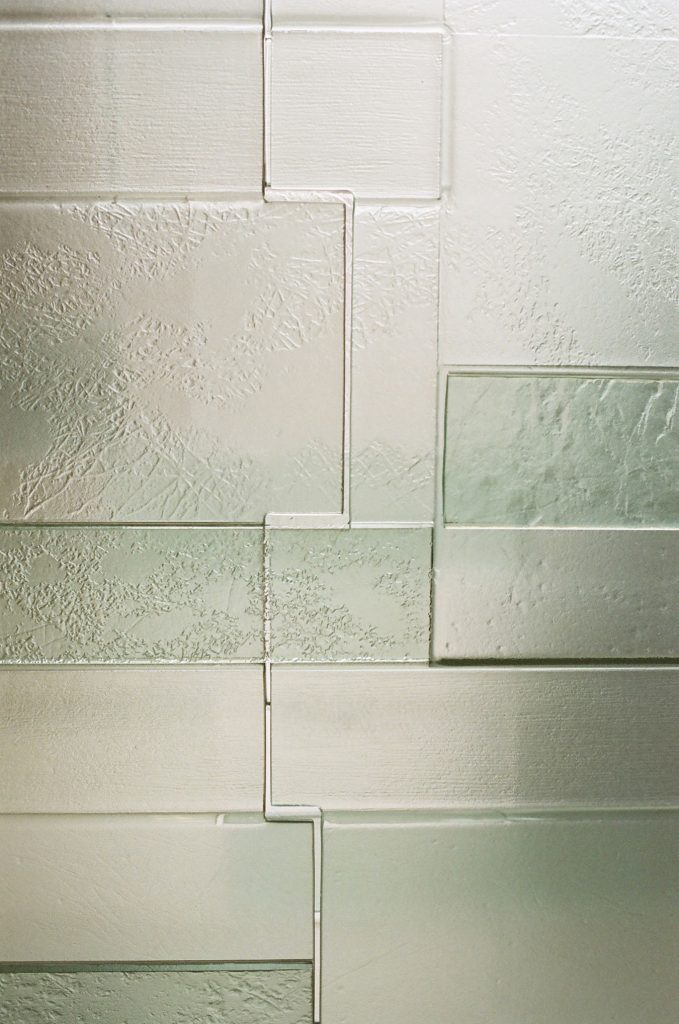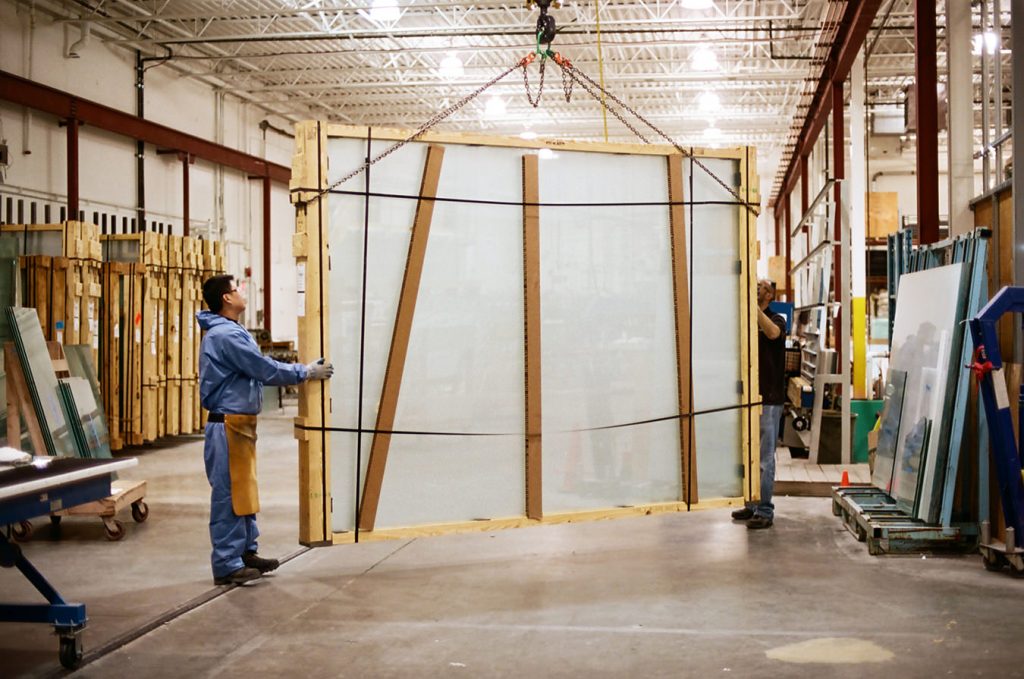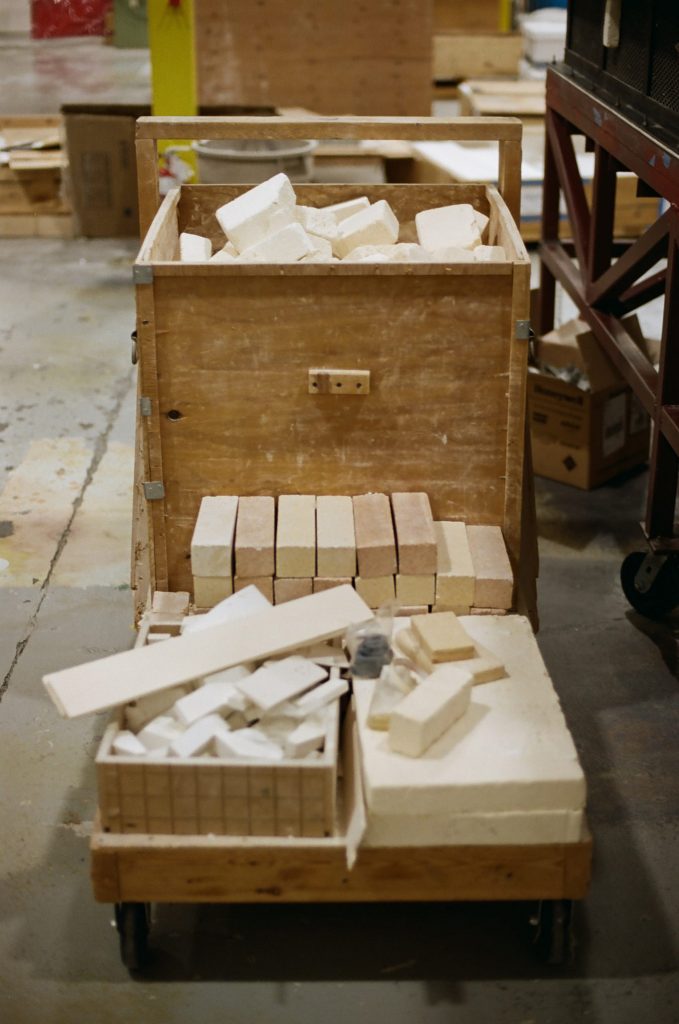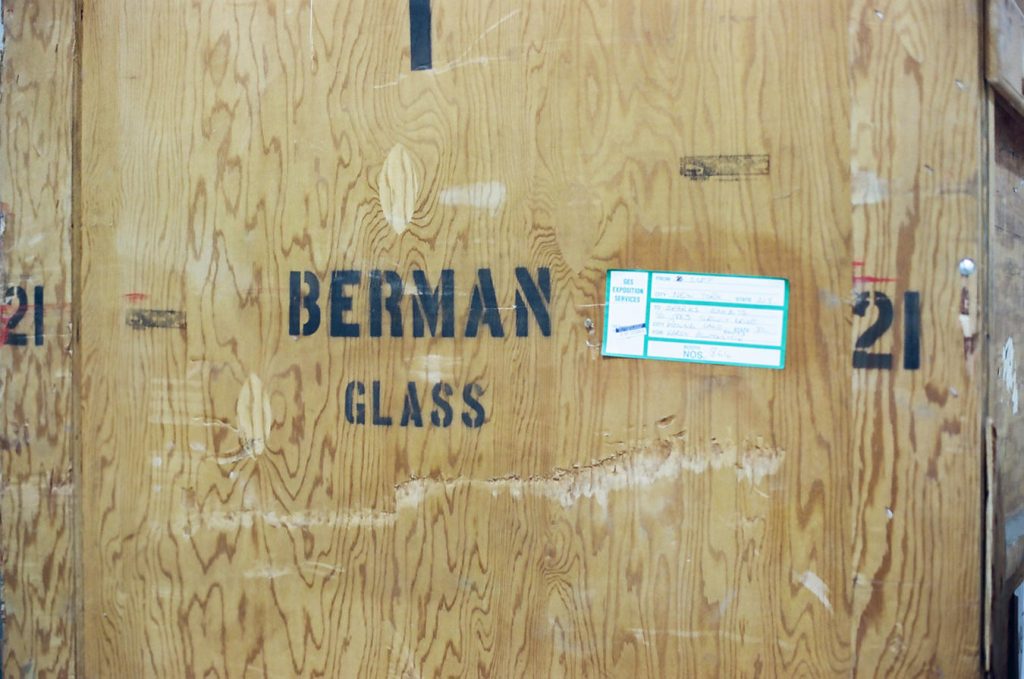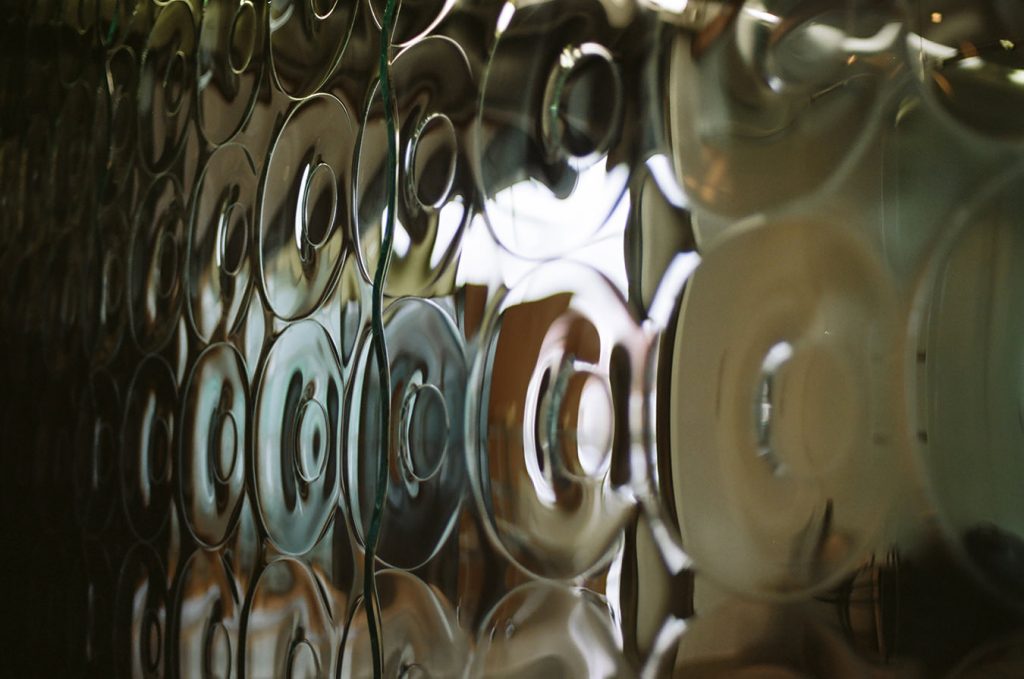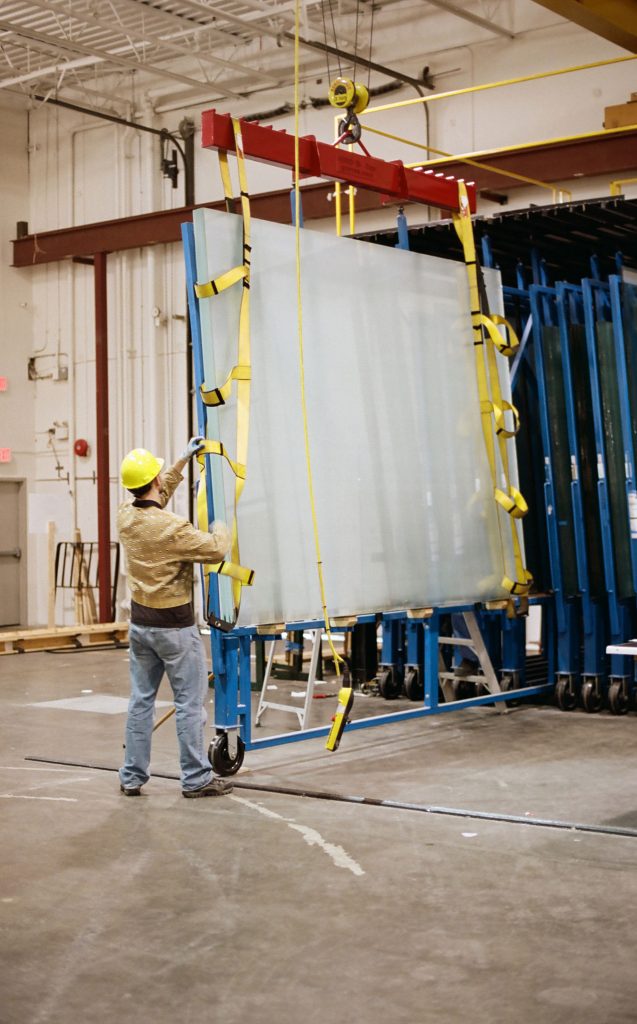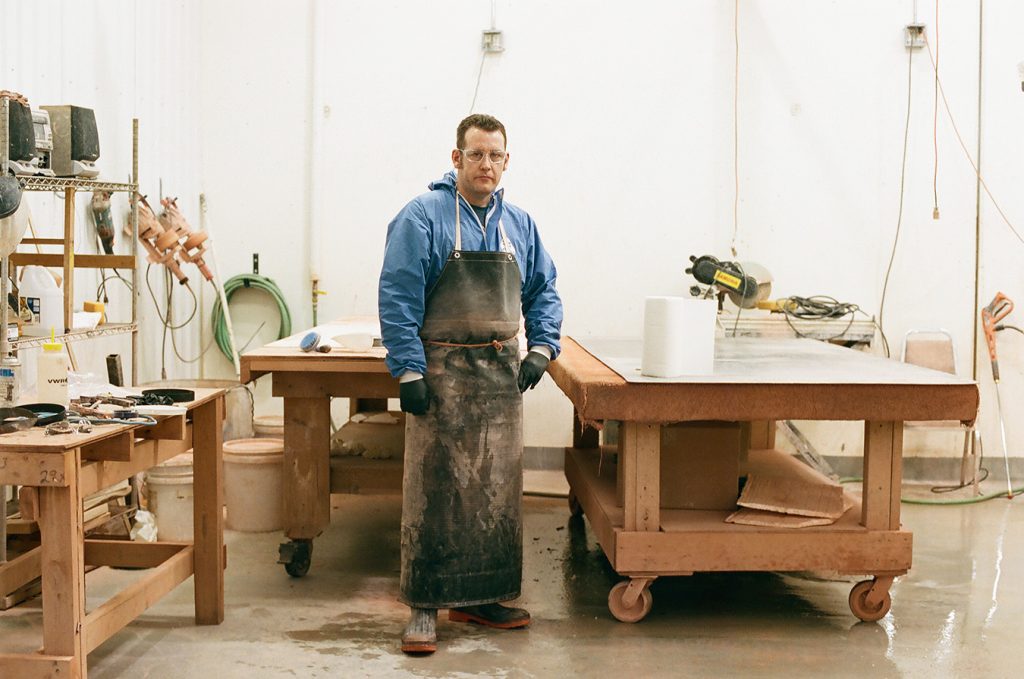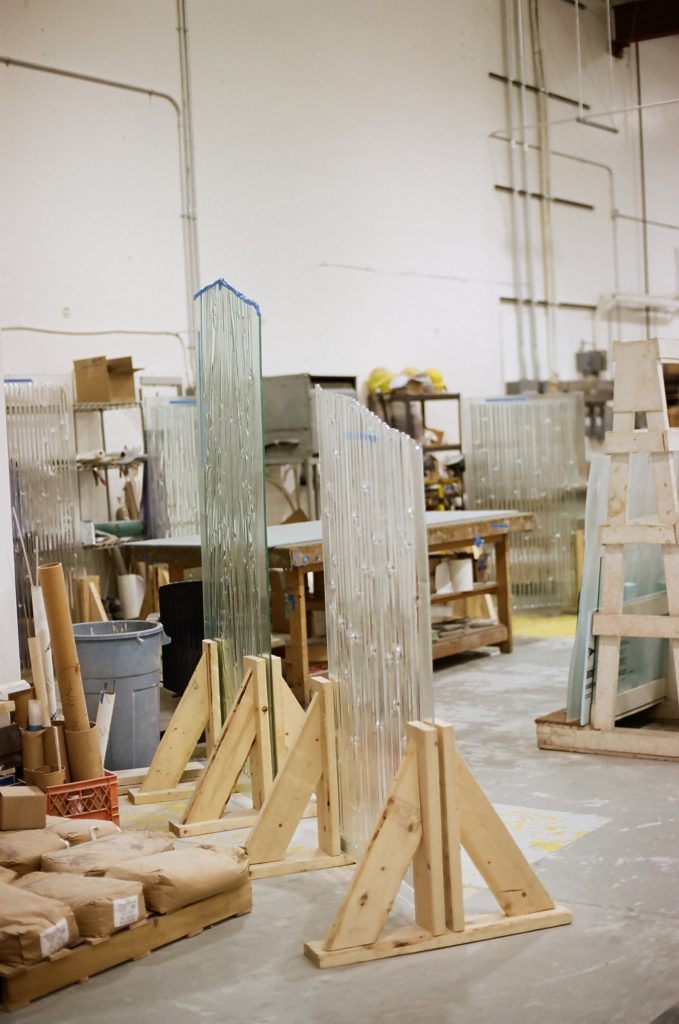The term serotiny is used to describe an ecological adaptation in which seed bearing plants release their seeds in response to an environmental trigger. That trigger is commonly fire. In some species of pine trees seeds are stored in cones held tightly shut by a resin. Inside, the seeds remain dormant until the resin that binds the cones shut is heated by fire and allows the cones to relax their grip and release its seeds to the forest floor.
The connection between pine cones and contemporary decorative glass may not be immediately apparent, but they do share a critical similarity: a poetic response to changes in temperature. Joel Berman’s poetry is tempered in a delicate exchange between light and glass.
It all started in 1980 with four people in a former pine cone extraction factory in Richmond, B.C. The building originally supplied the seeds of reforestation in Europe after the Second World War. It was an architectural machine that used the heat of a kiln to coax the seeds from their serotinous cones. Pinecones entered the building on a conveyor belt and traveled into a hopper on the third floor to be sorted before descending into the kiln room. Below the kiln was a furnace fueled by the discarded cones that heated the kiln above. Inside the kiln, the temperature climbed until the cones it contained opened, dropping their seeds into another hopper below to be bagged and shipped out. The fires of reforestation found a new purpose as the fire of kiln-cast glass.
The pine cone factory has since been demolished but the doors to its kiln room were salvaged and found a new role as the doors to the sandblasting room in Berman’s studio on Granville Island. Since 1980, the company, Joel Berman Glass Studios, has grown from four people to 40, providing decorative glass solutions for architecture and design to an international list of clients. While the Granville Island studio remains, it has become more of a showroom, relinquishing production to a 46,000-square-foot facility on Annacis Island in the south arm of the Fraser River.
One of the fundamental things about glass is its relationship to light, and the experience borders on the cosmic because you have no control over it.
Berman was raised on a farm in southern Manitoba. His grandfather was a watchmaker who also happened to sell hand blown glass from Italy in his shop. “I was always mesmerised by blown glass,” Berman says. “I wanted to learn about it, but I didn’t know you could actually learn how to make glass.” After writing letters that went unanswered to schools in Austria and Germany, Berman found himself apprenticing with an Irishman and a few of the forefathers of the contemporary glass movement before attending the Pilchuck Glass School near Seattle.
Berman’s early years as a glass artist was limited to the stained and leaded varieties. Though he was keen to explore the possibilities of kiln-cast glass, the only large kilns available at the time were for pottery. Eventually Berman came across a ceramic engineer and together they acquired a large, glass appropriate kiln. “We didn’t know what to do with it,” recalls Berman. “There were no big moulds back then. Nobody made them. We had to figure it out.”
These days, three master mould makers carve each mould by hand. Sheets of glass are placed on the moulds and heated. As the glass softens the textures are embossed onto the glass panels, becoming translucent. By exposing panels of glass to carefully controlled temperatures, the physical and phenomenological qualities of glass can be manipulated: low temperatures prevent the glass from absorbing texture, while high temperatures allow the glass to be manipulated in three dimensions.
One of the fundamental things about glass is its relationship to light, and the experience borders on the cosmic because you have no control over it. “You connect with light as a medium but you don’t control the medium,” Berman explains, “and I think that’s humbling because you get to do something that you are kind of disconnected from after its installed because light does its own thing.”
Berman’s ultimate intent is to pay homage to the users of a space. Light is a powerful agent in the psychology of space, capable of affecting people in a spectrum of ways whether it’s for hospitality or a hospital. “It has huge influences and there’s a big responsibility about how you use it,” says Berman. “You have to think about it. It comes from experience. And it comes from thoughtfulness.”
Over the years Berman and his team have engineered several innovative techniques in glass technology, including methods of recycling tempered glass, creating a smooth transition of textured to clear glass within the same panel, and 3D cast glass. Their first 3D pattern was corrugated, and featured expressions that established a whole new understanding of what can be accomplished in glass. They have developed a language of glass that is regularly copied and adapted all over the planet. “When we started doing this there were only a handful of other studios in the world,” says Berman. “That was it. And now it’s commonplace. Now, there are three or four people doing this in Vancouver in addition to mass producers manufacturing glass in the U.S., U.K., Germany, Australia, and China.”
“Art is art for art’s sake. And we like to do that whether it’s for a sculpture or a building.”
Vancouver is internationally recognized for its use of glass. Ironically, though, over 90 per cent of Joel Berman Glass Studio’s commissions come from outside the province. His projects range from installations at the scale of public art, such as the memorial to the Komagata Maru near the Vancouver Convention Centre to corporate projects at the scale of a building, like the Chrysler Building in New York. His largest project to date, and in fact, the largest art glass project in the world, was recently completed for the Hamad International Airport in Qatar.
The installation of 6,000 laminated glass panels is composed of three concourse groupings, each with its own unique response to the sandy hues of desert light. Placed end to end, the panels would cover a distance of over 5.5 kilometres. Berman has developed a way of printing of both sides of the glass so that the designs do not smudge when tempered. Printing on three of the four surfaces adds dimension, creating a pattern that changes relative to the position of the user and quality of the light. This isn’t exactly a new technique, just a contemporary iteration of an old practice. The stained glass that characterizes the Gothic churches of Europe was achieved by melting powdered glass onto larger panels; the only difference in the Doha project is the use of computers and inkjet printers to lay down glass powder with a digital precision. Called the Unity series, the design celebrates cultural diversity through an exploration of pattern and symmetry.
But if you ask Berman what his favourite project to date is, he will tell you it was a project for Canadian Airlines. A collage of coloured glass bent like a sail, held in place with smaller pieces of glass so that its five layers could bend in unison. “We didn’t know anything about laminating at the time,” says Berman, “but we figured it out and they were unbelievable.” Despite Berman’s offer to purchase them back, however, the sculpture was casually tossed in the trash when Air Canada absorbed Canadian Airlines back in 2000.
For Joel Berman, it’s a little bit about function but more about decoration. “We are branding, we are inviting, we are making things beautiful,” he says. “Art is art for art’s sake. And we like to do that whether it’s for a sculpture or a building. It’s totally for beauty. At least that’s how I like to view it.”

